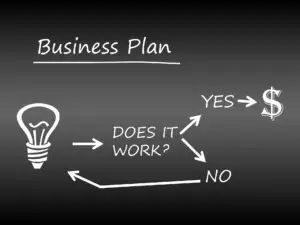Understanding the Circular Economy

The circular economy is an innovative economic model that aims to redefine the conventional linear process of production and consumption, characterized by a “take, make, dispose” approach. Instead of following this traditional model, which often leads to excessive waste and over-exploitation of resources, the circular economy focuses on creating a closed-loop system. This system emphasizes sustainability by maintaining the value of products, materials, and resources in the economy for as long as possible. By doing so, it aims to minimize waste and promote efficient resource utilization.
At its core, the circular economy is built upon several key principles, including designing for longevity, utilizing renewable resources, and closing the loop through recycling and upcycling. Unlike in a linear economy, where materials are extracted, used, and discarded, the circular model encourages businesses and consumers to rethink their approach to resource management. This involves enhancing the lifecycle of products through maintenance, repair, and refurbishment, thus reducing the need for new materials and mitigating environmental impact.
As we approach 2025, the transition towards circular systems becomes increasingly relevant for businesses seeking to align with sustainability goals and regulatory standards. The rising concerns about climate change, resource scarcity, and pollution drive the necessity for adopting circular practices. Companies are recognizing that integrating circular economy principles not only benefits the environment but can also lead to significant economic advantages. By minimizing waste and improving resource efficiency, businesses can reduce operational costs, create new revenue streams, and enhance their brand reputation among environmentally conscious consumers.
In summary, understanding the circular economy is vital as it represents a transformative shift in how societies perceive and manage resources. As we look towards the future, embracing circular economic frameworks will be essential for fostering sustainable growth and mitigating the environmental challenges ahead.
The Business Case for Zero-Waste Strategies

In today’s competitive landscape, establishing zero-waste strategies offers significant financial benefits for businesses. Companies are increasingly recognizing the potential of leveraging waste reduction not merely as an environmental initiative, but as a vital component of their profit strategy. Research indicates that enterprises adopting zero-waste programs can realize considerable cost savings, leading to increased profitability while contributing positively to environmental sustainability.
A compelling example of this is seen in the case of the global retail giant Unilever, which reports saving over €600 million annually by minimizing waste across its operations. They achieved this by implementing robust waste management practices and encouraging recycling within their supply chain. Companies like Unilever illustrate that investing in sustainability can lead to substantial financial returns, making a coherent case for the adoption of zero-waste strategies.
Moreover, consumer behavior has shifted dramatically towards favoring brands that actively demonstrate commitment to sustainable practices. According to a recent survey, approximately 66% of global consumers are willing to pay a premium for sustainable products. Thus, businesses not only secure cost savings through waste reduction but also attract a growing segment of environmentally conscious consumers. This shift presents an opportunity for companies to differentiate themselves in the market, enhancing customer loyalty and ultimately driving revenue growth.
Additionally, government regulations are increasingly favoring eco-friendly initiatives, potentially impacting operational costs and funding opportunities. By proactively adhering to zero-waste strategies, organizations position themselves to benefit from tax incentives and other financial advantages while ensuring compliance with evolving environmental regulations.
In summary, the adoption of zero-waste strategies is not simply an ethical obligation but a prudent business decision. The integration of sustainable practices into core business operations can lead to enhanced profitability, an expanded customer base, and a competitive edge in the ever-evolving marketplace.
Key Waste-to-Profit Strategies for 2025
As we move towards a more sustainable future, businesses are increasingly recognizing the value of adopting waste-to-profit strategies. In 2025, companies can implement various approaches that not only minimize waste but also contribute significantly to profitability. Here are five key strategies that can transform waste into profit in the coming years.
First, upcycling is a strategy that involves repurposing waste materials to create new products of higher quality or value. This not only reduces waste but also results in innovative offerings that can attract environmentally-conscious consumers. For instance, companies can turn scrap materials into fashionable accessories or home decor, which can create new revenue streams while aligning with sustainability goals.
Second, businesses can launch take-back programs, allowing customers to return used products for recycling or refurbishment. This practice not only encourages brand loyalty but also ensures that products are disposed of responsibly, thus minimizing landfill contributions. By reclaiming materials through take-back initiatives, companies can reduce production costs and incorporate recycled content into their offerings.
Third, engaging in waste-to-energy initiatives can provide companies with a dual benefit: reducing waste volumes and generating energy. By converting organic waste into biogas or bioenergy, businesses can power their operations or even sell energy back to the grid, creating an additional revenue stream while furthering their sustainability initiatives.
Fourth, product life extension practices involve designing goods to last longer and be more easily repaired. By focusing on durability, companies can reduce the frequency of replacements, encouraging consumers to invest in higher-quality products. This not only fosters customer trust but also decreases waste across the supply chain.
Lastly, adopting a circular supply chain approach can facilitate the continuous flow of materials through various stages of production and consumption. This enables businesses to close the loop on waste, ensuring that products are made from renewable resources and can be recycled at the end of their life cycle. By embracing a circular framework, companies can achieve significant cost savings and improve their bottom line.
Upcycling – Transforming Waste into New Products
Upcycling is a creative and innovative approach that involves transforming waste materials into new products of greater value or use. This circular economy strategy not only helps to minimize waste but also promotes sustainability by reimagining materials that would otherwise be discarded. Businesses across various sectors have recognized the potential of upcycling, leading to the development of unique merchandise that attracts environmentally conscious consumers.
One prominent example of upcycling can be observed in the fashion industry. Many clothing brands are now incorporating discarded fabrics and materials into their new collections, turning waste into stylish apparel. Brands like Reformation and Patagonia have embraced this model by utilizing surplus materials, thereby contributing to reducing overall textile waste. Additionally, companies like TerraCycle have pioneered a business model focused on upcycling non-recyclable waste into usable products, significantly showcasing the commercial viability of this strategy.
The economic benefits of upcycling are manifold. First, businesses can significantly lower their raw material costs by sourcing waste materials instead of purchasing new inputs. This not only enhances profitability but also mitigates reliance on virgin resources, which can be subject to fluctuating costs. Furthermore, upcycled products often command premium pricing due to their unique nature and the added value of environmental responsibility. As consumers become more aware of sustainability issues, they are increasingly willing to invest in products that align with their values, providing a competitive edge to businesses that adopt upcycling strategies.
Moreover, by adopting upcycling, companies can strengthen their brand image and establish themselves as leaders in sustainability. As corporate social responsibility becomes a critical factor in consumer purchasing decisions, businesses that actively promote and engage in upcycling are likely to foster stronger customer loyalty and attract a broader audience. In essence, upcycling stands out as a lucrative strategy within the circular economy, demonstrating that waste can be transformed into profit through creativity and innovation.
Strategy 2: Take-Back Programs – Creating a Closed-Loop System
Take-back programs are pivotal in advancing circular economy initiatives, allowing businesses to establish a closed-loop system that significantly mitigates waste. These programs encourage consumers to return their products at the end of their lifecycle, thus ensuring that materials can be collected, refurbished, or recycled effectively. This process not only aligns with zero-waste strategies but also fosters sustainable practices among businesses and their customers.
Implementing a take-back program involves several key elements, beginning with clear communication to customers about the importance of returning products. Businesses must articulate the environmental benefits associated with these programs, emphasizing how customers’ participation can contribute to resource conservation and waste reduction. By creating easy-to-navigate mechanisms for product return—including drop-off centers, mail-back options, or in-store returns—companies enhance customer engagement and facilitate participation.
Moreover, take-back programs provide several advantages to businesses beyond waste reduction. Firstly, they help companies recover valuable materials that can be reintegrated into their production processes, reducing reliance on virgin materials. This resource recovery not only lowers costs but also contributes to sustainable supply chain management. Additionally, such programs can enhance brand loyalty, as customers are increasingly inclined to support companies that demonstrate environmental responsibility.
Another significant aspect of take-back programs is their potential to create valuable data insights. By analyzing returned products, businesses can identify trends in consumer preferences and behaviors, leading to better product design tailored to lifecycle longevity and sustainability. Consequently, companies can innovate and improve their offerings, further aligning with sustainable development goals.
Overall, take-back programs exemplify how businesses can actively contribute to a circular economy while simultaneously reaping financial and reputational benefits. By promoting the return of products, companies not only minimize their ecological footprint but also pave the way for a more sustainable future.
Strategy 3: Waste-to-Energy – Turning Trash into Treasure
The waste-to-energy paradigm has emerged as a critical strategy within the circular economy, enabling businesses to transform trash into valuable energy sources. This approach not only mitigates environmental impact but also opens avenues for generating revenue. Various technologies underpin this process, including incineration with energy recovery, anaerobic digestion, and gasification. Each method employs distinct techniques to convert waste materials into usable energy, such as electricity or heat, thus contributing to energy sustainability.
Incineration, often utilized in larger municipal applications, involves combusting waste at high temperatures, with the resulting heat harnessed for energy production. Anaerobic digestion, on the other hand, facilitates the decomposition of organic materials by microorganisms in a controlled environment, leading to biogas generation. Gasification converts organic materials into syngas, a mixture consisting chiefly of hydrogen and carbon monoxide, allowing businesses to utilize waste products effectively while minimizing their carbon footprint.
Numerous companies have embraced waste-to-energy schemes and reaped considerable benefits. For instance, waste management firms like Covanta have established facilities that not only handle waste but also generate significant electricity for local grids. Innovation in this domain is supported by collaborative efforts between businesses, municipalities, and energy providers. Establishing partnerships with local authorities can enhance this strategy, facilitating shared investments and resource allocation which ultimately promote energy efficiency and cost reductions.
Moreover, businesses pursuing these initiatives can benefit from favorable regulatory frameworks and initiatives aimed at promoting renewable energy sources. By aligning their operations with local regulations and sustainability goals, organizations can position themselves as leaders in the energy transition while driving profitability. As waste-to-energy solutions become increasingly viable, they signify a profound intersection of environmental responsibility and economic opportunity in the evolving landscape of the circular economy.
Product Life Extension – Maximizing Value through Repair and Reuse
The concept of product life extension has gained significant traction as businesses seek to minimize waste and adopt more sustainable practices. Extending the lifespan of products is essential in a circular economy, where the goal is to keep resources in use for as long as possible. By focusing on repair and reuse strategies, companies can maximize the value derived from their products while reducing their environmental impact.
One effective approach is to implement robust repair services. By offering consumers the option to repair their products, brands not only demonstrate a commitment to sustainability but also build customer loyalty. For instance, companies like Patagonia have established repair programs that encourage customers to send in worn-out items for mending, thereby prolonging their life cycle. This initiative not only reduces waste but also fosters a sense of brand loyalty as customers view the company as an advocate for sustainability.
Another avenue for product life extension is retrofitting. This involves upgrading existing products with new technology or features to enhance their functionality and appeal. For example, automotive manufacturers can retrofit older vehicles with modern components to improve fuel efficiency, thereby extending the vehicle’s useful life. This practice not only minimizes the need for new purchases but also aligns with a growing consumer interest in sustainable transportation options.
Resale of pre-owned products also plays a vital role in product life extension. Brands like IKEA have embraced the resale model, allowing customers to sell back furniture and receive store credit. This not only diverts waste from landfills but also positions the company as a responsible and eco-conscious retailer. Such initiatives can enhance customer engagement and stimulate sales through additional avenues of revenue.
In pursuing product life extension strategies, businesses can contribute significantly to the goals of the circular economy. By focusing on repair, retrofitting, and resale, brands can effectively minimize waste while simultaneously reinforcing customer loyalty and enhancing overall profitability.
Innovative Partnerships – Collaborating for Circular Solutions
In the pursuit of sustainability and waste reduction, innovative partnerships play a pivotal role in driving circular economy initiatives. By collaborating with other businesses, non-governmental organizations (NGOs), and governmental bodies, companies can leverage diverse resources, expertise, and networks to create effective circular solutions. These partnerships not only enhance operational efficiencies but also foster a shared commitment to sustainability within the community.
One notable example of successful collaboration is the partnership between major retailers and waste management companies. These organizations have come together to develop comprehensive recycling programs that significantly reduce waste while creating economic opportunities. By pooling resources and aligning their goals, these businesses have managed to streamline waste collection processes and improve recycling rates, all while generating revenue through the sale of reclaimed materials.
Furthermore, partnerships with NGOs can provide invaluable insights into community needs and environmental priorities, enabling businesses to align their waste reduction strategies with local objectives. For instance, a company that produces packaging materials may partner with an environmental organization to design biodegradable alternatives. This collaboration not only addresses community concerns regarding plastic pollution but also positions the company as a leader in sustainable practices, ultimately boosting its profitability.
Government collaborations are also critical in implementing circular economy strategies. By working together, businesses and governmental bodies can create policies that incentivize waste reduction initiatives, such as subsidies for recycling programs or tax breaks for sustainable practices. These efforts can lead to significant cost savings and enhanced competitiveness for participating businesses, underscoring the financial benefits of engaging in circular solutions.
In conclusion, building partnerships with other businesses, NGOs, and governmental organizations is essential for fostering innovative circular solutions. These collaborations can lead to waste minimization, increased profitability, and a positive impact on community engagement, ultimately contributing to the broader goal of a sustainable and circular economy.
Conclusion: The Future of Business in a Circular Economy
The transition towards a circular economy presents a paradigm shift for businesses, emphasizing sustainability and efficiency. As outlined in the discussions throughout this post, adopting circular economy practices by 2025 is not merely an option but an imperative for organizations aiming to remain relevant and profitable in an increasingly eco-conscious consumer market. By leveraging innovative zero-waste strategies, companies can significantly reduce their environmental impact while simultaneously realizing financial gains. This dual benefit creates a sustainable business model that is not only respectful to the planet but also economically advantageous.
Throughout this blog, we have explored five pivotal ways in which businesses can convert waste into profit. These include optimizing resource usage, embracing recycling and repurposing, investing in eco-friendly supply chains, fostering a culture of innovation, and actively engaging in community partnerships. Collectively, these strategies not only promote the efficient use of materials but also enhance brand reputation and customer loyalty. As the market shifts towards circular practices, businesses that proactively adapt will enjoy competitive advantages, including cost savings and enhanced operational resilience.
<pmoreover, 2025,=”” a=”” actionable=”” adopting=”” ahead=”” also=”” an=”” and=”” approach=”” as=”” benefits=”” better=”” beyond=”” businesses=”” but=”” challenges=”” circular=”” circularity=”” consumer=”” contribute=”” crucial=”” economy=”” efficiency=”” embarking=”” endpoint=”” ensure=”” essential=”” extend=”” face=”” find=”” for=”” foster=”” future.
